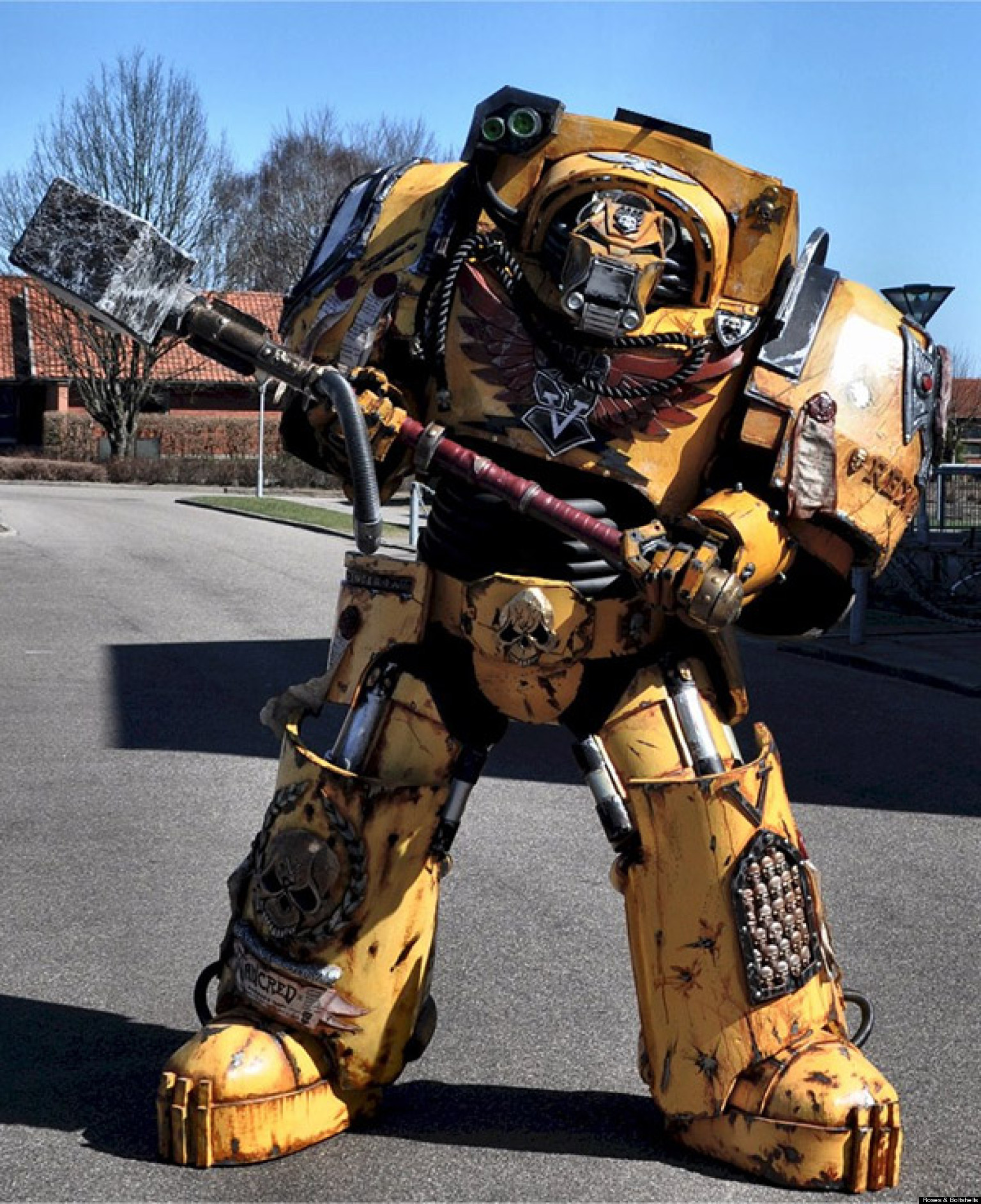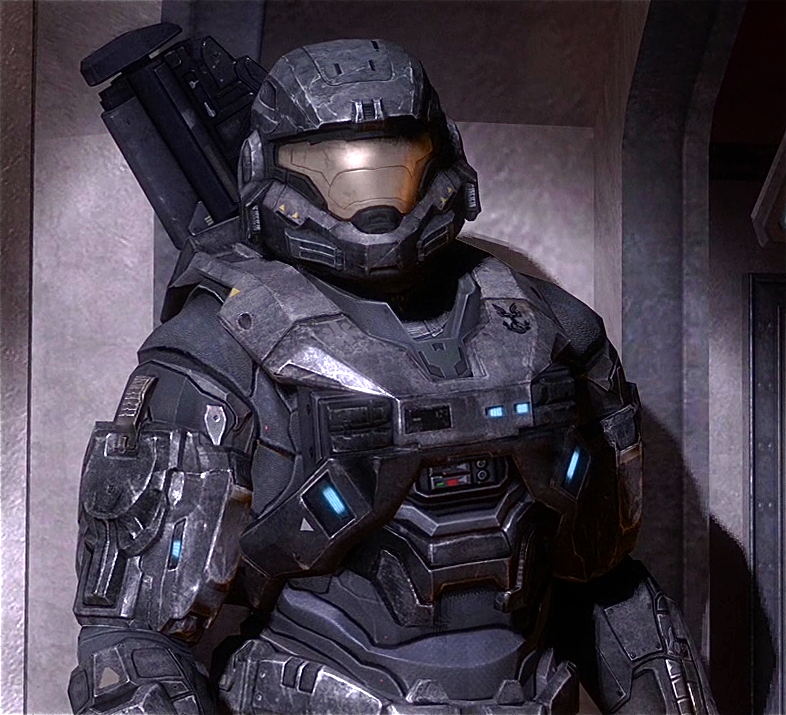Power armors: what they are, and are they even possible?
Hiya. After my two recent posts about the importance of balance (in the diet context as well as in general), I promised that next post would be about biceps and explosions.
Well, this is not exactly the next post, and it will not be exactly about those two bits of awesome. But it’s very close.
So, confession time.
Powered metal
I want to build a power armor.
You know, like a medieval suit of plate armor, but with its own motive power system to both support its weight and add to the user’s own strength. And bulletproof. Definitely bulletproof.
(Yeah, it probably should be powered armor. But power armor is what everybody calls them, so power armor it is.)
Everybody knows Iron Man. That red-and-gold suit he’s wearing is a power armor there.
But I don’t really have that kind in mind. Far too shiny and fancy for my tastes. Literally too shiny, too glossy.
I mean something more akin to Warhammer 40 000 meets Halo Reach. All angles, pain, and worn scratched surfaces.


Disclaimer
Now, armors are obviously made for war. And that’s something I’m not a huge fan of. Probably even less so than your average Westerner. I did my compulsory military service for the Finnish Border Guard, generally regarded as one of the toughest non-special forces units in the country. So, I have lots of experience with being somewhat tired, somewhat cold, and somewhat hungry.
I use the word somewhat to distinguish myself from people who have survived an actual war or a natural (or personal) disaster. I’m not claiming I know what that’s like. But, compared to the standard comfy life here, my army time was quite freaking tough indeed. Falling asleep while walking tough. Yup, that’s possible. Multi-layered blisters on my soles tough.
So, I do have some sort of impression of what an actual war would be like, minus the actual risk of dying. Not cool. Not cool at all. I would go quite far to avoid that.
So, let’s limit this discussion to the hypothetical level, shall we? A thought exercise, okay?
Indeed, for the remainder of this post, think with your balls. If you don’t have balls, pretend that you do and think with them. Biceps and explosions, remember?
The brief history of AWESOME – and the sad reality
The concept of power armor was probably incepted by the scifi writer Robert A. Heinlein, in his book Starship Troopers. Which is really good by the way, in ways completely inrelated to the movie by the same name.
In his book, Heinlein introduced the concept of soldiers encased in a suit of powered armor, cabable of kilometer-long jumps, carrying portable nukes, and being inserted to the combat zone via an orbital drop.
Since then, the same idea has been repeated in numerous games, books, movies, you name it. And while the exact abilities of those suits of iron vary – from the lumbering nigh-unarmored weapons platform of the Edge of Tomorrow to the ninja-like agility of Iron Man to the demigod warsuits of the primarchs of the aforementioned Warhammer universe – the overall idea remains the same.
Take a plate armor – or any type of exosceleton-like structure for that matter – and add some servos to its joints. Make it follow the wearer’s movements, so that the armor can at least support a part of its own weight. This, in turn, allows more plates to be slapped on for extra protection, or heavier weapons systems to be handled, or both.
Now, this obviously not very simple in practise. Otherwise, somebody would have done it already. Many have actually tried, with not-so-stellar results. The US military has a pair of exo-legs for load-carrying, but that’s about it.
System requirements
That, however, is not enough to stop me. I shall no no defeat, and I can always make some preliminary designs about what a functional warplate should be like.
First of all, it should protect the user from small-arms fire.
Naah – on second thoughts, let’s step it up a little.
Make it practical immunity from all small arms fire, and protection from heavy machine guns plus the most common anti-materiel rifles. That means calibers in the 12 to 15 mm range.
Now, that kind of protection obviously does not come free. The best ceramic armor plating with publicly-available stats (there does not seem to be many) that I’ve been able to find, would have a surface mass density of approximately 70 kilograms per square meter. The average human male has a surface area of 2, but we have to account for the armor bulkiness, so let’s make it six (cause doubling the silhuette quadruples the surface area which would give us 8 square meters, but we obviously need to have thinner plates in inner thighs and similar areas). That would be a mass of slightly less than 500 kg.
Let’s reserve a similar number for the actual exosceleton structure supporting the plating, servos, power sources, and misc, and we have a nice round total mass of 1 ton.
Now that’s manly. For that mass, it simply has to be powered – no way to move around in it otherwise.
But how to actually make it move?
Actuator options
For achieving this powered motion motion, we need components called actuators. With the current level of technology, we basically have two realistic options: either hydraulics or electrical servos.
Hydraulics have several attractive qualities. They can produce huge forces and torques at modest power levels, which is exactly what we need for human-like motion. Just calculate the torques produced (sic) by your hip joints when you squat down if you don’t believe me.
Unfortunately, they are also quite bulky, both in the sense of dimensions and weight. The actuators themselves – be they cylinders or motors – we could tolerate. However, also the hydraulic tubes needed to carry the pressurised fluid do have a quite hefty weight per unit length. Even the fluid itself is quite dense. We would also need lots of valves with quite precise continuous control, again adding to the weight.
Finally, using hydraulic cylinders to power joints with a large range of motion would be problematic. Indeed, even for a single degree-of-freedom joint we would be limited to strictly less than 180 degrees. Hydraulic motors would be better, but I don’t know about their torque-to-weight ratio.
Servo-actuators
So electrical servomotors we shall have. Not really surprising considering my background, hah.
In the benefit-drawback map, they place almost polarly opposite to hydraulics. They are themselves quite light-weight, and capable of huge output powers. They are also very easy to control precisely with cheapish and very light-weight power electronics, and electricity itself of course weighs nothing. The motors can’t leak, either.
However, their torque leaves a lot to be desired for, in this application. Don’t get me wrong, there are lots of high-torque motors available, and they routinely beat gasoline engines in that respect. But they are not that good.
Linear motors would be even worse. Completely unsuitable for mimicing the function of human muscles.
So, we are left with rotational motors connected to the joints directly.
And for this purpose, gearboxes would be needed with quite high gear ratios. Some special epicyclic gearing would probably be the best choice.
For the motors themselves, I’m thinking fairly standard permanent magnet motors. They would of course have to be optimised for that kind of operation – fairly relaxed strolling must of the time, with huge overloads for very brief periods of time. Maximum torque, and transient thermal management would probably be the limiting design factors. All in a day’s work.
So, that concludes our power armored mental exercise for today. Next time, whenever that may be, we’ll take a look at some joint problems. And maybe some software. Everybody loves software.
Until then.
-Antti
Check out EMDtool - Electric Motor Design toolbox for Matlab.
Need help with electric motor design or design software? Let's get in touch - satisfaction guaranteed!

Wow can i know more on this me and my friend want to make a armour in megatech
There is a 3rd option. And I only mention it because it’s being used in movie props working movie props to simulate the effects of hydraulics and electric servos. Springs pulleys levers basic clockwork. It might seem crude but that is what powers a basic hand clap and has been used in a lot of movie props. In the original dark Crystal the actors that could run at 55mph. Using a sort of crutches splints spring mechanism in puppets. Yeah springs are crude but sometimes crude has possibilities.
while you probably know way more on this topic than I do, I want to correct one thing electricity dose have weight and can leak. The simplest examples are rechargeable batteries, if you get a full battery and an empty one than drop them from the same height the empty will bounce more than the other meaning it is lighter, also over time rechargeable batteries will lose electricity(it happens in very small amounts over a long time so I don’t think that is going to be an issue)